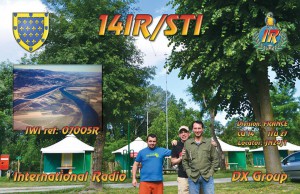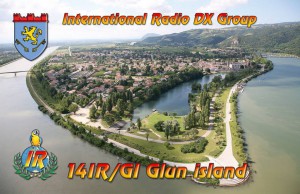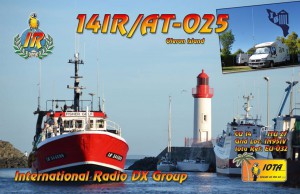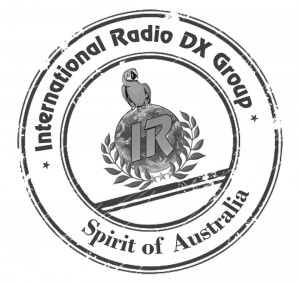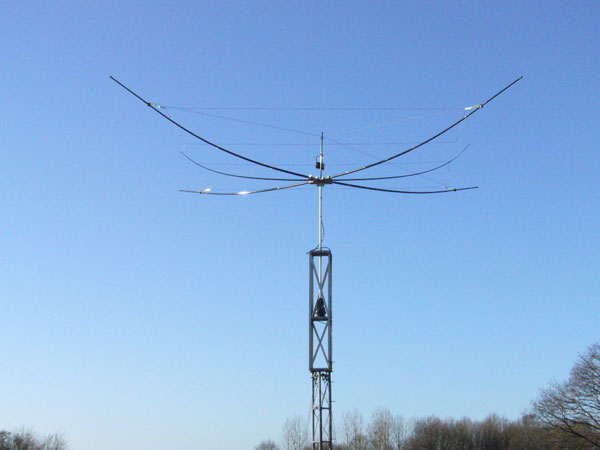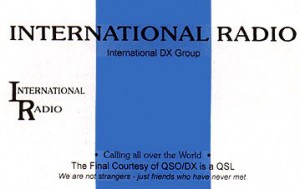 It seems so unbelievable, but our heart and soul, the IR-DX Group, is already 20 years old … HAPPY BIRTHDAY IR-DX !
It seems so unbelievable, but our heart and soul, the IR-DX Group, is already 20 years old … HAPPY BIRTHDAY IR-DX !
Tag Archives: General News
14IR/AT025, 14IR/GI, 14IR/STI sent out
224IR012 / 224IR013
Nice logo by Luca
14IR ISLAND TOUR 2013 QSL preview
Babaow Gang Island Tour June 2013 : some proof pictures !
Preview : possible new EUROPE QSL
This is the preview for a possible new Europe QSL (project by 14IR184 and 14IR017).
Before going further, we would like to hear your remarks, comments, idea and if you would be interested in ordering some.
If enough people are interested and make orders, then we will be able to go on and print it.
Why five confirmation boxes ? To save on QSL cards and mailing costs when you need to confirm several stations using the same manager (for example 1SD007, 1AT070) or to confirm IWI / ISLANDS tours (Delta Xray for example).
Feedback welcome !!!
New QSL project : Europe QSL
Diego and I are currently working on a new project that will be a folded ("double") QSL card for European divisions.
Later, we will start working on a WORLD QSL.
We will soon publish some QSL preview / sample that you will be able to comment.
We can already tell you that there will be six confirmation boxes in these QSL cards, so the card will be perfect to confirm your QSO with IOTA tours, island tours were you worked several references.
Great idea, Diego ! Saves QSL cards, shipping weight, and still better than sending a log sheet !
IR-DX activations online museum
Our friend Adrian 15IR106 is working on collecting all pictures, proofs, QSL from past IR-DX activations.
Please visit http://www.irdxmanager.ch
Feel free to contact Adrian if you can help !
AA-54 RigExpert overview
Hi all,
Just received new tool to improve radio station! the new antenna analyzer from Rig Expert which will give you all parameters from your vertical or horizontal antenna:
Caracteristics:
Frequency range: AA-30: 0.1 to 30 MHz, AA-54: 0.1 to 54 MHz
Frequency entry: 1 kHz resolution
SWR measurement range: 1 to 10
SWR measurement for 50 and 75-Ohm systems
SWR display: numerical or easily-readable bar
R and X range: 0…1000, -1000…1000 in numerical mode, 0…200, -200…200 in graph mode
Display modes:
– SWR at single or multiple (AA-54 only) frequencies
– SWR, R, X, Z, L, C at single frequency
– SWR graph, 100 points
– R, X graph, 100 points
RF output:
– Connector type: UHF (SO-239)
– Output signal shape: rectangular, 0.1…10 MHz (AA-30) or 0.1…10.8 MHz (AA-54). For higher frequencies, third or fifth (AA-54) harmonics are used.
– Output power: about + 13 dBm (at 50 Ohm load)
Power:
– Two 1.5V, alcaline batteries, type AA *
– Two 1.2V, 1800…2700 mA·h, Ni-MH batteries, type AA *
– Max. 3 hours of continuous measurement, max. 2 days in stand-by mode when fully charged batteries are used
– When the analyzer is connected to a PC or a DC adapter with USB socket, it takes power from these sources
Interface:
– 128×64 graphical backlit LCD
– 6×3 keys on the water-proof keypad
– AA-54: multilingual menus and help screens, AA-30:menus and help screens in English language
– USB connection to a personal computer
Dimensions: 22·10·3.6 cm (9·4·1.5”);
Operating temperature: 0…40 °C (32…104 °F)
Weight (including batteries): 400g (14 Oz)
* Ni-MH batteries are not included with the analyzer. Users can purchase these batteries with a corresponding charging adapter.
Let’s have a look here:
http://www.rigexpert.com/index?s=aa54
For example , I realised some technical measures of my Home made 4 elements Moxon designed by Dave*30DA016 (http://www.dx4.us/ ) which is at 7m off the ground and we see that I have to reduce the dimensions of each elements to have a new central frequency nearly around the 27.555Mhz.
For this test, the best is to be the closest as possible from the antenna, but in this quick overview, I made the measurements from the shack.
Results may vary depending on the length of coaxial cable you have.
I did some tests on some home made verticals and in this case, I did not see much difference between the results outside and inside shack (maybe in this case coaxial line didn’t change really the characteristics). Anyway, the best would be to connect the AA-54 with a short coax. to the antenna!
The main menu of the analyzer
*First measure: 27.555Mhz
So the SWR is correct but R value is not really at 50 ohms so I think it will be interesting to try reducing the size of antenna to be nearly perfectly tuned around 27.555Mhz
*Then:
You can locate the central frequency with the buttons on top of keyboard and we see that the frequency which you can find R=50 ohms is around 27.389Mhz , so next step could be to reduce all antenna dimensions and see the the results..! 😉
Let’s wait spring or summer time to test it really ! More to come soon!
Stay tuned!
Diégo*14IR184

